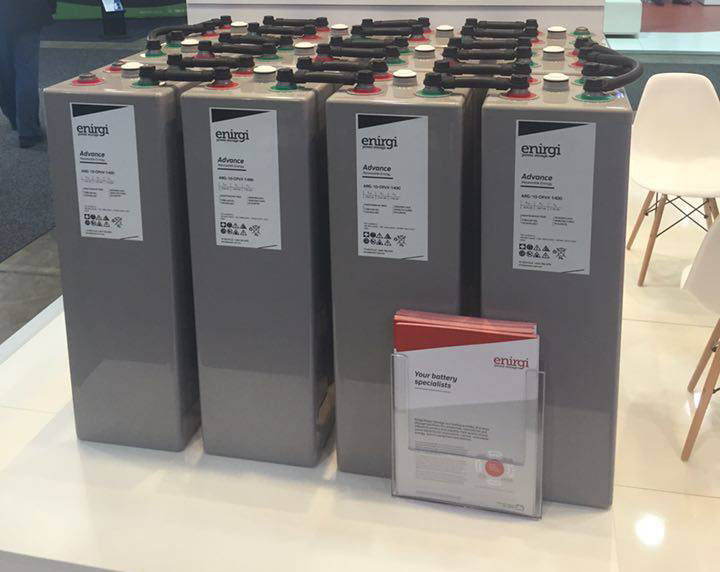Lead Acid Batteries

This is the same type of battery that you have in your car, but the solar-storage versions are usually much taller (as shown in the picture).
You need a bank of these batteries to power your home, ideally stored in a climate controlled shed, because heat will drastically reduce their lifespan.
For Australians with no grid access, lead acid batteries are still the default choice because they are tried and tested technology.
Lead-acid batteries have a number of drawbacks though:
- They take up a lot of space, and many of them emit hydrogen gas. Hence the need for a battery-shed.
- They have a low cycle life (1000-3000 cycles), which means that, depending on how many time a day you charge and discharge them, they will only last 2-8 years tops.
- They generally have a depth of discharge of around 60% (or less). This means that you can only use 60% of their capacity – otherwise you cripple their lifespan.
- Their performance figures are quoted at around 20 ºC ambient – meaning that if your battery shed gets hotter than this (almost guaranteed with Australia’s climate) their performance and lifespan will degrade.
The most common application for lead acid batteries is a rural household installing a bank of batteries + solar, because it’s cheaper than paying tens of thousands to get the grid extended all the way to their house.
However, some Australians who have normal access to the grid still elect to go off-grid with a big bank of lead acid batteries. As I explain in another article about off-grid solar systems, from an economic point of view this is sheer madness for an average Aussie home. If you have a super efficient home that uses less than 5kWh per day, leaving the grid can make more sense. But for the average Aussie home using over 20kWh per day, you would need to spend $30,000-$50,000 to go off grid reliably.
How much will a lead acid + solar setup cost?
It all depends on how many batteries you want. But the short answer is: you’ll pay around double for a hybrid solar system.
At the time of writing, a good 6.6kW solar system costs about $6,000 installed. If you want to add 4kWh of usable storage to this, expect to pay about $12,000 for the complete system. 4kWh of electricity storage will get a very efficient house through the night.
The average Aussie home is not that efficient unfortunately – so you may need a bigger system. If you add 8kWh of usable storage, the total price would be closer to $20,000. This would get an average home through the night.
A note on the future of lead acid technology
As you might have guessed from this article, I personally believe that traditional lead acid battery technology is not a great choice for on-grid battery storage.
It has been ‘battle tested’ in providing a solution for off-grid homes, but since I believe the future of mass-market battery storage is ‘hybrid’, not ‘off-grid’, other technologies will render lead-acid obsolete.